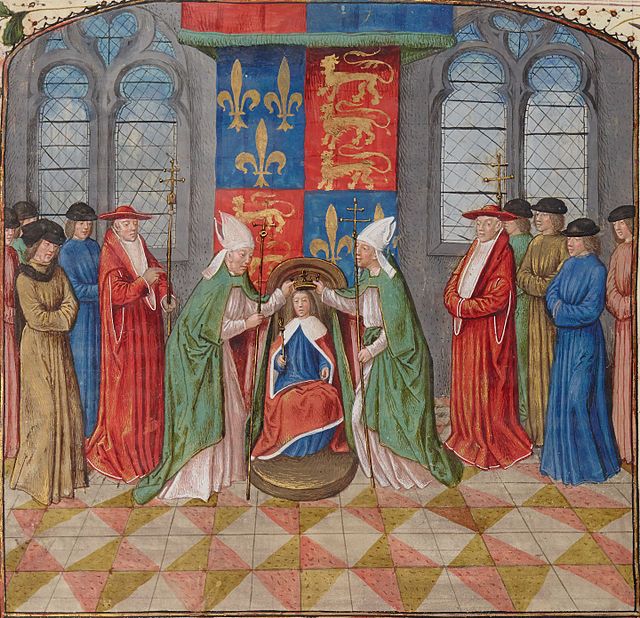The Treaty of Tours was an attempted peace agreement between Henry VI of England and Charles VII of France, concluded by their envoys on 28 May 1444 in the closing years of the Hundred Years' War. The terms stipulated the marriage of Charles VII's niece, Margaret of Anjou, to Henry VI, and the creation of a truce of two years – later extended – between the kingdoms of England and France. In exchange for the marriage, Charles wanted the English-held area of Maine in northern France, just south of Normandy.
The Château de Plessis-lez-Tours, where the treaty was signed
Henry VI was King of England from 1422 to 1461 and again from 1470 to 1471, and disputed King of France from 1422 to 1453. The only child of Henry V, he succeeded to the English throne upon his father's death, at the age of nine months; and succeeded to the French throne on the death of his maternal grandfather, Charles VI, shortly afterwards.
Miniature in the Talbot Shrewsbury Book, 1444–1445
Henry VI, aged nine months, shown being placed in the care of the Earl of Warwick
A mid-15th-century depiction of Henry being crowned King of France at Notre-Dame de Paris on 16 December 1431
Queen Margaret of Anjou, wife of Henry VI, as depicted in the Talbot Shrewsbury Book, 1444–45





